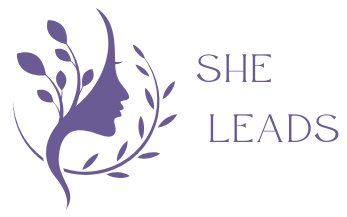When disaster strikes, meticulous plans can quickly become obsolete. Consider the relief effort meticulously planned to address a community devastated by a sudden earthquake, only to be upended by a political upheaval. In the dynamic and often unpredictable landscape of humanitarian and development work, traditional project management approaches frequently fall short. Agile methodologies, originally crafted for the fast-evolving world of software development, offer a promising alternative. By prioritizing flexibility, continuous feedback, and collaboration, Agile methodologies can transform the design and implementation of humanitarian and development programs, ultimately enhancing their effectiveness and sustainability.
The Need for Change
The world of humanitarian and development work is marked by volatility. Natural disasters, political upheavals, and sudden shifts in community needs are common occurrences that can derail even the most meticulously planned projects. Traditional project management methods, which emphasize detailed upfront planning and sequential task completion, often lack the adaptability required to respond to these unforeseen changes. This rigidity can lead to inefficiencies, wasted resources, and programs that fail to meet their intended goals. Agile methodologies, with their emphasis on iterative development and responsiveness, present a viable solution to these challenges.
Understanding Agile Principles
Agile methodologies stand in stark contrast to traditional approaches by emphasizing iterative progress, stakeholder collaboration, and the ability to pivot based on feedback and changing conditions. At its core, Agile is about breaking down projects into smaller, manageable increments called sprints, typically lasting a few weeks. After each sprint, teams review progress, incorporate feedback, and adjust plans as necessary. This cyclical process continues until the project reaches its goals. Agile principles such as iterative development, stakeholder collaboration, and flexibility are particularly well-suited to the fluid and often uncertain nature of humanitarian and development work.
Implementing Agile in Humanitarian and Development Programs
Adopting Agile methodologies in humanitarian and development programs requires a shift in mindset and processes. Organizations must foster a culture that values flexibility, continuous learning, and open communication. This cultural shift is foundational for Agile practices to take root and thrive. Equipping teams with the knowledge and skills to implement Agile is essential. This can be achieved through dedicated training sessions, workshops, and ongoing support to help teams understand and embrace Agile principles. While Agile provides a robust framework, it is not one-size-fits-all. Organizations must adapt Agile practices to fit their specific contexts and constraints.
Practical Tips for Implementation
Start Small: Initiate Agile practices with smaller pilot projects to test, refine, and demonstrate the value of the approach.
Train Continuously: Implement ongoing training sessions and workshops to build and sustain Agile skills and knowledge across the team.
Engage Stakeholders: Maintain regular communication with stakeholders and communities to gather continuous feedback and ensure alignment with their evolving needs.
Monitor and Adapt: Utilize Agile tools such as Kanban boards and Scrum meetings to consistently track progress, identify issues, and make timely adjustments for optimal outcomes.
Engaging Communities and Enhancing Stakeholder Collaboration
Direct involvement of communities in the project design and implementation phases ensures that programs are contextually relevant and effective. Community feedback should be continuously sought and incorporated into the project cycle. Agile’s emphasis on collaboration encourages constant communication and cooperation between project teams, beneficiaries, and other stakeholders. This ensures that the project remains aligned with the needs and expectations of those it aims to serve, fostering stronger relationships and leading to more impactful and sustainable outcomes.
Benefits of Agile Methodologies
The application of Agile methodologies in humanitarian and development programs brings several notable benefits. Agile’s iterative approach allows for quick adjustments in response to changing conditions, ensuring that the program remains relevant and effective. By fostering constant communication and collaboration, Agile methodologies strengthen relationships with beneficiaries and partners. Agile’s focus on incremental progress and prioritization of tasks helps teams work more efficiently, reducing the risk of resource wastage. Additionally, frequent reassessment and adaptation help identify and mitigate risks early, reducing the likelihood of project failure.
Overcoming Challenges
Transitioning to Agile methodologies is not without its challenges. Resistance to change, resource constraints, and cultural differences are common obstacles. However, these can be addressed through clear communication, explaining the benefits of Agile to all stakeholders, and providing examples of its successful application. Adapt Agile practices to fit within existing resource constraints, focusing on the most critical elements of the methodology. Modify Agile practices to respect and integrate local customs and expectations, ensuring that they are culturally appropriate and effective.
Conclusion
Agile methodologies offer a transformative approach to managing humanitarian and development programs. By prioritizing flexibility, continuous feedback, and stakeholder collaboration, Agile can help organizations navigate the complexities of these environments more effectively. The strategic adoption of Agile methodologies not only enhances program efficiency and impact but also fosters a culture of adaptability and continuous improvement. As the landscape of humanitarian and development work continues to evolve, embracing Agile can provide the resilience and responsiveness needed to achieve sustainable development goals. Now is the time for organizations to make Agile a cornerstone of their project management strategy, ensuring their programs are better equipped to meet the challenges of the future.
Strategic Senior Manager Specializing in Global NGO Operations, Governance, and Innovative Programming


